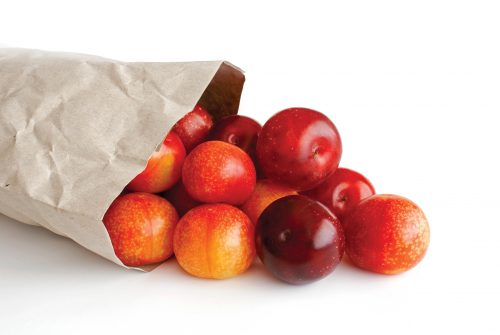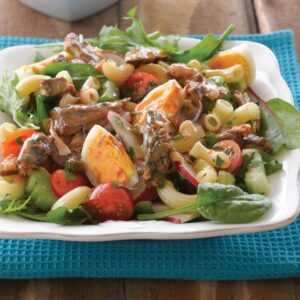
Plums are relatives of the peach, nectarine and almond. There are a large variety of plums, such as the Japanese variety, which includes the high-yield yellow-fleshed Doris plum, and the Black Doris: a dark, black-purple fruit with dark-red firm flesh (great for jam and preserves).
Buying
Avoid plums with split skins, bruises or decay. Ripe plums have just a little give and a cloudy cover on their skin.
Storing
If you buy plums firm to ripen at home, store at room temperature and keep an eye on them as they mature quickly. Once ripe, plums can be stored in the fridge. To freeze plums, halve and remove stones then place halved-side down on a plastic tray. Cover in foil and freeze.
Nutrition
Plums with red hues contain a group of antioxidants known as anthocyanins while a golden skin and/or flesh indicates the presence of another group of antioxidants, the carotenoids. Plums have high levels of antioxidant activity.
Using plums
Plums are divine eaten fresh and need little garnishing. Eat the fruit at room temperature to allow maximum sweetness and juiciness. If you want to feature plums in a dessert, try our Light summer crumble recipe. And to have plums beyond summer, freeze or preserve a batch in jars.
Did you know? Plums are drupes – the name given to fruit with a hard stone surrounding the seed.
www.healthyfood.com










